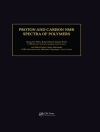The Ceramic Engineering and Science Proceeding has been published by The American Ceramic Society since 1980. This series contains a collection of papers dealing with issues in both traditional ceramics (i.e., glass, whitewares, refractories, and porcelain enamel) and advanced ceramics. Topics covered in the area of advanced ceramic include bioceramics, nanomaterials, composites, solid oxide fuel cells, mechanical properties and structural design, advanced ceramic coatings, ceramic armor, porous ceramics, and more.
Table des matières
Foreword ix
Preface xi
Acknowledgments xiii
ENERGY AND GLASS MELTING
Strength of Glass and Glass Fibers 3
Hong Li
Operating Experience with OPTIMELT Regenerative Thermo-Chemical Heat Recovery for Oxy-Fuel Fired Glass Furnaces 17
A. Gonzalez, E. Solorzano, S. Laux, U. Iyoha, K.T. Wu, and H. Kobayashi
BATCHING
Optimization Program for Batch Wetting Offers Benefits in Furnace Life, Energy Efficiency, and Operational Reliability 29
Thomas S. Hughes, F. Philip Yu, and Blaine Krause
Effect of Borate Raw Material Choices on the Batch Reactions of Alkali-Lean Borosilicate Glasses 43
Mathieu Hubert, Anne Jans Faber, Simon Cook, and David Lever
Glass Cullet: Impact of Color Sorting on Glass Redox State 57
Stefano Ceola, Nicola Favaro, and Antonio Daneo
COMBUSTION, REFRACTORIES, AND SENSORS
Oxygen-Solid Fuel Combustion in Glass Melting Furnaces 71
Mark D. D’Agostini, Jinghong Wang, and Juping Zhao
Hydroprime® Gas Generators Provide Low Cost, Reliable Hydrogen for Float Glass Manufacturing 83
Goutam Shahani, Kyle Finley, and Nick Onelli
Corrosion of AZS Refractories–Source of Defects in Tableware Glass 89
P. Simurka, J. Kraxner, P. Vrábel, and T. Pauèo
How Fused Cast AZS Take Care of Secure and High Quality Glass Manufacturing 103
Michel Gaubil, Isabelle Cabodi, Jessy Gillot, and Jie Lu
Advanced Furnace Inspection and Monitoring Based on Radar Sensors 117
Yakup Bayram, Alexander C. Ruege, Peter Hagan, Elmer Sperry, and Dan Cetnar
ENVIRONMENTAL
Optimizing Low Momentum Oxy-Fuel Burner Performance in Glass Furnaces to Minimize Furnace Emissions and Alkali Volatilization 135
Uyi Iyoha, Hisashi Kobayashi, Euan Evenson, and Elmer Sperry
Heat Oxy-Combustion: An Innovative Energy Saving Solution for Glass Industry 149
Hwanho Kim, Taekyu Kang, Kenneth Kaiser, Scott Liedel, Luc Jarry, Xavier Paubel, Youssef Jumani, and Levent Kaya
MODELING
Intelligent Furnace Design and Control to Increase Overall Glass Furnace Efficiency 159
Erik Muijsenberg
Glass Melt Quality Optimization by CFD Simulations and Laboratory Experiments 169
A.F.J.A. Habraken, A.M. Lankhorst, O.S. Verheijen, and M. Rongen
FORMING
Forehearth Heating 181
Alan Stephens, Clive Morgan, and Stephen Sherlock 185
Improvements to Emhart Glass Vertiflow Mold Cooling Applications in Glass Container Production 185
Pierre S. Lankeu Ngankeu
Multi-Layer Glass Thickness Measurement 193
Jason Ness, Filipp Ignatovich, and Steve Heveron-Smith
The Qualification of a New Glass Strengthening Process 201
Steven Brown and Dubravko Stuhne
Author Index 207
A propos de l’auteur
S. K. SUNDARAM, Ph D, is an Inamori Professor of Materials Science and Engineering at Alfred University. Before joining Alfred University, Dr. Sundaram was a chief materials scientist at the Pacific Northwest National Laboratory (PNNL). He joined the PNNL in 1994 as a post-doctoral fellow and became a senior research scientist in 1996. He was then promoted to chief materials scientist in January 2002. Dr. Sundaram is internationally recognized for interdisciplinary research. He has made over 100 technical presentations, edited/contributed to twelve books, published over eighty peer-reviewed publications and technical reports, mentored/supported over forty-five students, and organized/co-organized several national and international symposia on advanced topics in materials science. He is also a co-inventor in three issued patents and two provisional patent applications.












